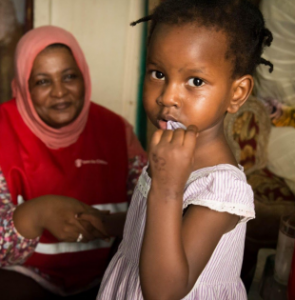
Child mortality studies reveal that the mortality rates following humanitarian crises may be elevated up to 20 times the pre-crisis baseline, and disproportionally affect children and women. Over 75% of the morbidity and mortality in populations affected by humanitarian emergencies is caused by vaccine-preventable and other epidemic-prone diseases. Even though proven interventions like vaccines can prevent common childhood illnesses, these illnesses continue to extract a heavy toll during crisis situations, because appropriate interventions do not reach the children who most need them. In humanitarian emergencies, which are characterized by a breakdown in rule of law, increased insecurity, population displacement, and destruction of public infrastructure, including health facilities, access to healthcare is further reduced. In the 50 most fragile states, 53% of child deaths and 60% of maternal deaths occur in settings affected by conflict, displacement, or natural disasters. Women and children are the most vulnerable in crises, constituting 75% of those who need humanitarian assistance.